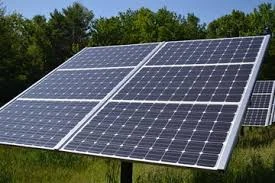Cost Analysis of a 30 MW Solar Power Plant Project
Understanding the Costs of a 30 MW Solar Power Plant
As the world leans towards sustainable energy solutions, solar power has emerged as a frontrunner in combating climate change while providing reliable electricity. A 30 megawatt (MW) solar power plant appeals to many investors and municipalities looking to enhance their renewable energy portfolios. However, understanding the cost implications of such a project is crucial for making informed decisions.
Initial Capital Investment
The first significant expenditure in developing a 30 MW solar power plant is the initial capital investment, which includes the cost of solar panels, inverters, land, and installation. On average, the cost of solar power plants has been decreasing over the past decade due to advancements in technology and economies of scale. A rough estimate places the cost of a utility-scale solar project between $1,000 and $3,000 per kilowatt (kW), depending on various factors such as location, technology, and permitting processes. For a 30 MW solar plant, this translates to a total investment of approximately $30 million to $90 million.
Solar panels typically account for about 50% of the total cost, so choosing the right type of panels—whether monocrystalline, polycrystalline, or thin-film—can significantly impact the overall expenses. Monocrystalline panels, known for their efficiency, tend to be the most expensive, while polycrystalline and thin-film options provide cost advantages but may deliver lower energy outputs.
Operational Costs
Once a solar power plant is operational, it incurs ongoing operational and maintenance costs. These expenses usually comprise routine maintenance, insurance, land leasing or purchase costs, labor, and monitoring systems. Typically, operational costs range from $15 to $30 per kW per year. For a 30 MW facility, this would equate to approximately $450,000 to $900,000 annually.
While operational costs are typically lower than those of fossil fuel plants, it is essential to ensure that effective maintenance practices are followed. Regular inspections and upkeeping of equipment, such as inverters and solar panels, are crucial to optimize performance and reduce downtime.
30 mw solar power plant cost

Financing Options
Financing a 30 MW solar power project can be complex, with various options available for investors. Common financing methods include traditional bank loans, solar power purchase agreements (PPAs), and investments through tax equity. Each financing path has its benefits and drawbacks, and often, a combination of these methods is used to mitigate risks and improve cash flow.
In recent years, government incentives and tax structures have played a crucial role in making solar power projects financially feasible. Generally, solar energy investors can benefit from the Investment Tax Credit (ITC), which provides a significant tax credit based on the installation costs. This incentive significantly reduces the initial capital burden, making financing easier and improving project viability.
Return on Investment (ROI)
Understanding the ROI is paramount for stakeholders considering a 30 MW solar power plant. The lifespan of a solar plant typically extends 25–30 years, and the projections of energy production, coupled with anticipated energy costs, come into play when estimating returns. As electricity prices rise, solar energy can provide a hedge against volatile fossil fuel prices and lead to substantial savings over time.
Numerous studies indicate that a well-structured solar power plant can generate returns upwards of 10% per year, depending on location, financing terms, and operational efficiency. The ability to participate in renewable energy credits and sell energy back to the grid can further enhance financial returns for investors.
Conclusion
In summary, investing in a 30 MW solar power plant offers a promising opportunity for generating clean energy while contributing to a sustainable future. Understanding the various costs involved—initial capital investments, operational expenses, financing options, and potential ROI—is essential for stakeholders to make calculated, effective decisions as they venture into the renewable energy market. With proper planning and execution, a 30 MW solar power plant can be a landmark achievement, both environmentally and economically.
-
String Solar Inverter: The High-Efficiency Solution for Smart Solar EnergyNewsJul.14,2025
-
Revolutionizing Rooftop Energy with the Power of the Micro Solar InverterNewsJul.14,2025
-
Power Independence with Smart Off Grid Solar Inverter SolutionsNewsJul.14,2025
-
On Grid Solar Inverter: Powering the Future with Smart Grid IntegrationNewsJul.14,2025
-
Monocrystalline Solar Panels: High-Efficiency Power for the Future of Clean EnergyNewsJul.14,2025
-
Bifacial Solar Panel: A Smarter Investment for Next-Generation Energy SystemsNewsJul.14,2025







